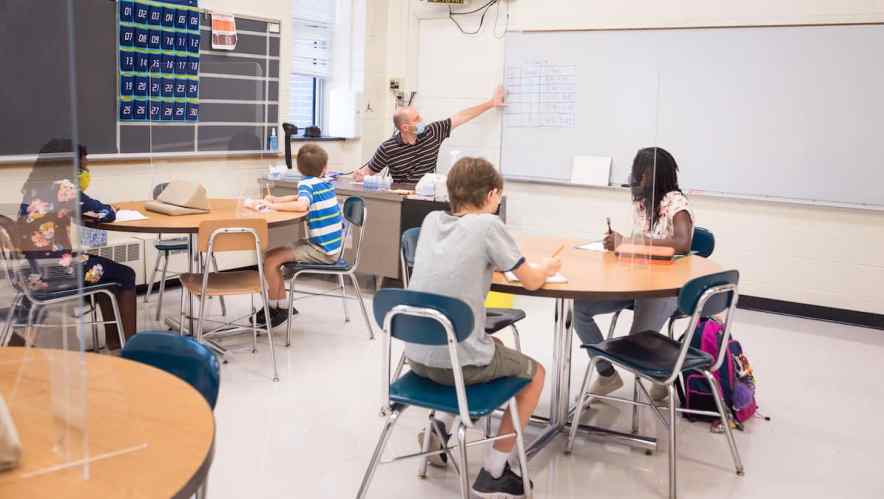On a Friday night in April, Governor of Rhode Island Gina Raimondo, cold-called Salesforce Chair and CEO Marc Benioff to ask for information on how customer relationship software can be used to track the spread of coronavirus. This was the start of a collaborative relationship that helped inform product development, and serves as an incredible example of a public and private sector partnership.
As I continue to follow this story, what is inspiring to me as a resident, a citizen, and a marketer working to bring awareness to the solutions that help public sector response efforts, is the way in which people everywhere are stepping up to do what they can to help. From healthcare workers to grocery clerks, individuals have emerged as heroes during the pandemic. From governors calling CEO’s to government organizations calling labs everyone is reaching beyond their immediate networks for advice and support.
For public servants, the call to action has been answered with passion and commitment. Helping laid-off workers obtain unemployment insurance payments, guiding small business owners through federal relief programs, meticulously tracing the contacts of people who have tested positive for the coronavirus: these are just a few of the essential functions public employees are providing to keep their communities afloat.
At our Global Government Summit, held virtually last week, we heard stories of public-private partnerships and innovative responses that have helped communities cope with these challenges, together. At Salesforce, we’re honored to work alongside the many amazing government organizations that are stepping up to help those in need.
I want to share with you what we heard, and give you a behind the scenes look at how public servants are rising to meet today’s challenges. And how they use technology to navigate the multiple crises affecting our society while preparing for what’s coming next.
Meeting resident needs in the moment
One of the biggest challenges of the coronavirus has been scaling. How do government departments support the floods of requests they’re receiving while continuing outreach to their communities with their existing resources?
The State of New Mexico Department of Workforce Solutions, who went from fielding 3 to 4-thousand calls on a weekly basis, to hundreds of thousands of calls, needed to expand their call center operations to handle the volume, and quickly.
CIO Sue Anne Athens and her team created new channels for residents to get in touch, including chatbots. Because they were already using cloud technology, the team was able to shift their call center operations from live to virtual in under a week and add more remote call center agents to handle the volume.
“We’ve done a tremendous amount in a very short time,” Athens shared during the event, “We’ve learned the importance of what we do as public servants, focusing on the citizen and their needs, understanding, and empathizing is really an important thing.”
Applying innovation
It’s a new time for the private sector and for the government and public sector. Crises have a way of identifying weaknesses — especially when it comes to technology. Innovation and iteration, centered on our customers’ missions, have helped to launch effective solutions and get results quickly.
One question discussed during the virtual Global Government Summit, was how can we continue to evolve and continue to engage technology, in order to move forward to help protect citizens across the country?
In Florida, the Division of Emergency Management is innovating on how they can keep first responders safe. Deputy Director Kevin Guthrie and his team are working with labs to initiate self-swab tests that have a 36 to 48-hour turnaround. They’re now taking what was a 7 to10-day process and bringing it down to get those responders back to work, fast.
“I think one of the great things that the Florida Division of Emergency Management has done in the last four months is engaged across this platform to see what we can do,” said Guthrie, “We’re helping our community through logistics … we’re helping our community through the self-reporting app that you have for temperature checks … We have to continue to engage technology to help us keep our communities safe. That’s where I want to make sure we focus as we move into the future, because this is a new time for all of us.”
In fact, their staff has been working 12-hour days, seven days a week since March 7. And, they acknowledge they will continue this pace as their communities continue to need support. The reason they’re able to do this is due to the flexibility of the technology and the dedication of their staff.
Security and trust
When streamlined, accurate communications are critical, there is a premium on getting everyone together. For Minister of Customer Service Victor Dominello and his team from New South Wales, a virtual “war room” affords them a place to coordinate at the same time every morning.
“Trust is critical. Because we were delivering high-quality service from New South Wales, people will have trust in that brand. That means when communications come through from your channel, people will pay more attention to it.”
Building trust and finding the right strategy for providing updates to both employees and the community has been instrumental because it enabled communication, and activation that is really fast. Otherwise, people will tend to do their own thing, but with a pandemic, that can’t be the case.
Preparing for what’s next
As the public sector leads the way through reopening and recovery from COVID-19, we are helping to drive digital innovation that will enable us to better prepare for and respond to whatever comes next. We are so grateful to be a trusted partner in the journey to build a better, more modern government. We are all in it together.































